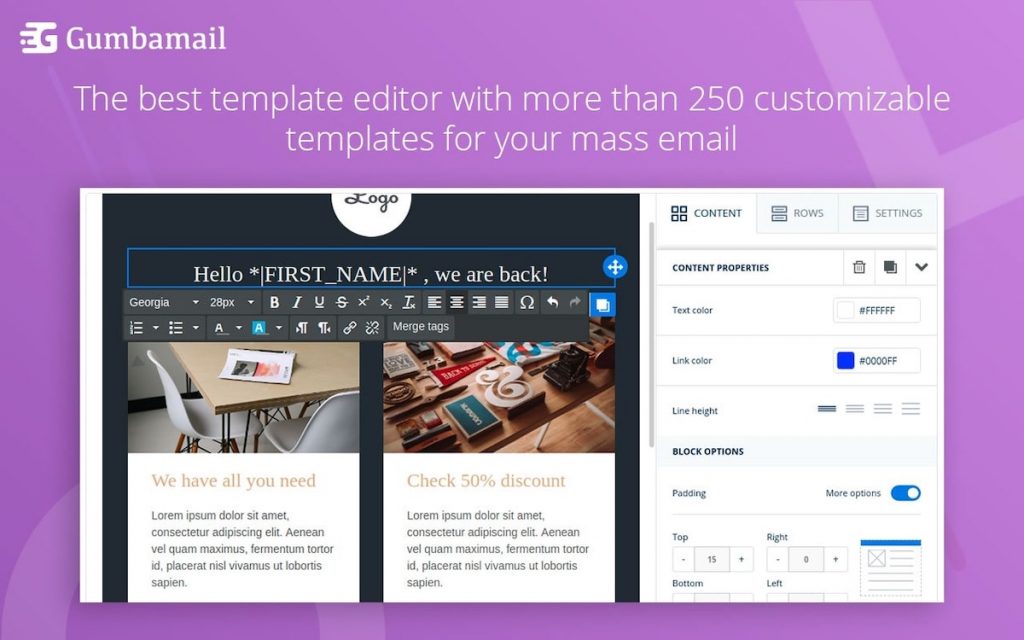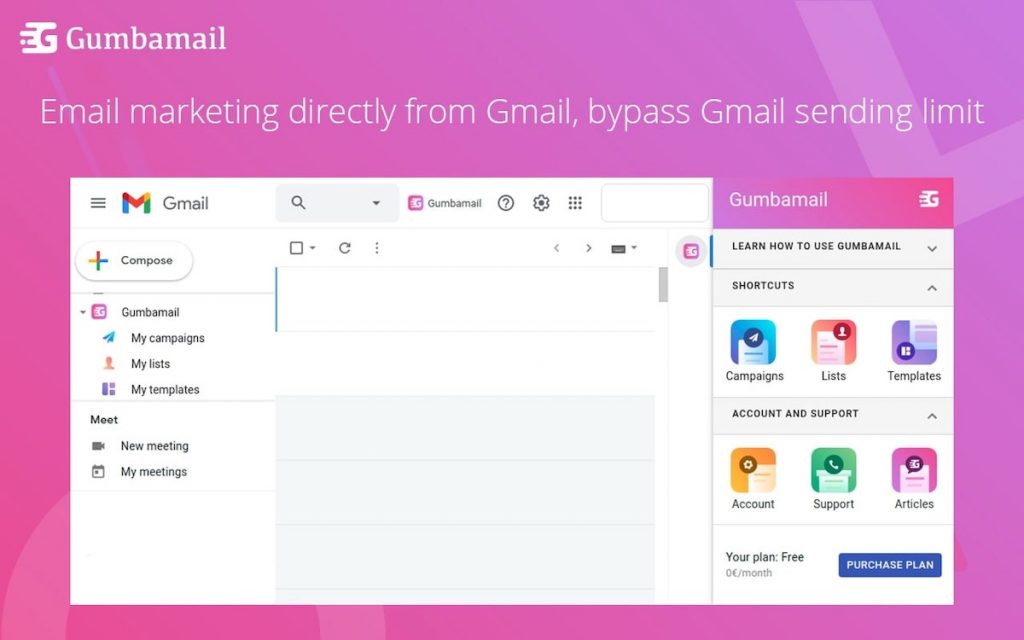4 Ways to Implement Email Targeting to Boost Sales
Want your promo email to make a good impression? You’ve got 10 seconds.
No, that’s not a typo. Research shows the average person spends just 10 seconds reading each email. Therefore, you need to ensure each message sent is relevant to the recipient, making it well worth their time and interest. Otherwise, your carefully crafted message will quickly be deleted — or worse, end up flagged as spam.
So, how do you capture a reader’s attention right off the bat?
Email targeting allows you to send thoughtfully curated, valuable content to each recipient on your list. With email targeting, you’ll segment your list based on different criteria, then send different material to each individual segment. Therefore, you ensure only relevant content reaches each individual reader rather than bombarding them with email blasts that don’t pique their interest or solve their unique problems.
Below, we offer an overview on email targeting, including why it’s valuable, how to implement it, and different segments to consider for your list.
What Is Email Targeting, Anyway?
Put simply, targeting segments your email list into different personas, then devises a content plan based on each segment. You can segment your list on virtually anything, such as:
- Past purchase history: including which products they’ve purchased in the past and complementary products they could be interested in
- Demographic data: such as their age, gender identity, or income level
- Geographic location: including their time zone or proximity to your different storefronts
- Contact type: including vendors, partners, potential clients, former clients, and current customers
Email targeting creates a better experience for the user because each recipient only reads messages that are relevant to their unique needs, interests, or pain points. For example, if you run a special promo email for first-time buyers, it will be extremely confusing (and a little rude!) to send that message to loyal, recurring customers. Or, if your Midwest region is hosting a sale, it wouldn’t make much sense to fire off an e-commerce blast to customers shopping at your East or West Coast stores.
By only sending relevant messages to your list, you build a deeper level of trust with your readers. Your subscribers will learn that you will only send material that addresses their unique needs, which should have a positive effect on your open rate, click-through rate, and unsubscribe rate.
4 Ways to Leverage Email Targeting to Build Trust Within Your List

Now that you know what email targeting is, it’s time to implement it within your larger digital marketing strategy. Below, we offer several ways you can segment your list, then specific email campaigns you can send to each segment.
1. Buyer History
Segmenting your list by buyer history allows you to recommend the best products and/or solutions to solve customer pain points. You can recommend complementary products, give loyal customers a heads-up about an emerging product line, or inform clients about a new software upgrade. (Note: To draft emails based on past buyer history, you may need to subscribe to an email marketing software that integrates with your e-commerce system.)
Knowing your customers’ buyer history allows you to send targeted email messages such as:
- Customer anniversaries: Send customers a special promo code one-year after their first purchase at your company.
- Customer re-engagement: If a once-loyal customer hasn’t made a purchase in six months or more, send a retargeting email with a coupon encouraging them to make a new purchase.
- Complementary products: If a customer makes a purchase, send an automated email with other related products. For example, if a customer purchases a new sofa from your furniture store, send a special email recommending a coffee table with the same aesthetic.
2. Geographic Location
Today, many businesses make sales online. With that being said, there are times when segmenting your subscribers based on geographic location can come in handy. Client locations influence how you plan sales trips, when you plan flash sales at various storefronts, and even when it’s appropriate to launch a seasonal item.
Here are a few fun targeted email marketing campaigns you can send based on geographical location:
- Snow day sales: Bad weather can be a drain on storefront sales. Send out a special “snow day” email with a promo code for shoppers to make an online purchase.
- Coffee chat tours: Are you making a sales trip to a certain city? Send out a blast to prospects in the area linking to Calendly to schedule a coffee date while in town.
- Hometown pride: Does a local high school or university have a big game coming up? Sync your content marketing plan to the big event, offering a special promo to anyone who visits your store the week of the big game.
3. Contact Type
Here’s a hard truth every small business owner should know: Not everyone in your email list will buy from your company.
Instead, your list will be filled with partners, vendors, former customers, prospects, and yes — even competitors. Therefore, be sure to only send email content that’s relevant to each group. (To do this, you’ll need a marketing automation platform with a built-in CRM system that allows you to create custom fields.)
Here are a few innovative, personalized emails you can send to each segment:
- Partners: Do you have standing relationships with other businesses? Keep them up-to-date on technology releases, new apps or features, or new product lines so they’re fully equipped to recommend you to their clients.
- Prospects: Not every prospect will be ready to make a sale. Instead, send them a nurture campaign with educational content to slowly guide them toward a conversion.
- Competitors: Having competitors subscribe to your list isn’t a bad thing! Send your competitors educational content to position yourself as a thought leader in your respective industry.
4. Customer Behavior
Many times, prospects will need a little extra push to make their first purchase. Therefore, you can coordinate your email marketing strategy around subscribers’ behavior to help move them further down the sales funnel. For example, you can send emails based on when a subscriber opens or clicks a previous email, when they arrive on a specific landing page, or when they download a piece of content. (Note: You will need an email marketing tool that allows you to build automation sequences based on these behaviors.)
Here are a few ways to target subscribers based on behaviors:
- Abandoned cart emails: Do you have online shoppers who place an item in their cart, but don’t actually make the purchase? Send them a reminder email enticing them to buy their product.
- Opt-in emails: Do you offer a “freebie” such as an e-book, webinar, or mini course? Once a new subscriber joins your list, send them a welcome series offering educational content from your company.
- Most engaged readers: If a reader clicks a link within your email, send an automated email to follow up with additional content.
Email targeting helps you get the most from your marketing efforts

Email is one of the most lucrative marketing channels for small business owners. With that being said, you have a small window (just 10 seconds!) to build trust with your readers.
To foster a deeper connection with your audience, be sure to leverage email targeting. Email targeting leverages list segmentation to ensure each message is relevant to your readers. That way, you help establish a high degree of trust with your target audience.
To get the most from email targeting, you’ll need to invest in an email service provider that offers a built-in CRM system. Gumbamail is an affordable, user-friendly email marketing platform that allows you to build custom fields based on customer data. Plus, it comes with 800+ pre-designed templates, a drag-and-drop builder, built-in reporting metrics, and works with your existing Gmail account.
Ready to see how Gumbamail can transform your email marketing efforts? Download the free plugin to get started.


